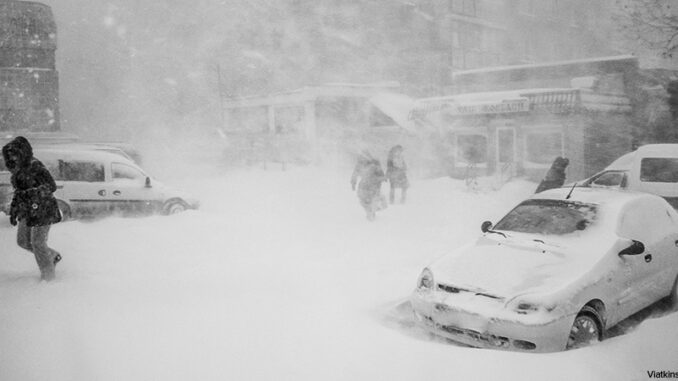
Scholarships for the Next Generation of Latinx Leaders
Internships can be a great way to learn about your future career path, and to make important connections in your chosen field. But they are often unpaid, which can make it difficult for many qualified students to participate. These economic hardships can be even more challenging when one is the member of an underrepresented group. In fact, a 2020 study from the National Association of Colleges and Employers found that Hispanic students are more likely than other demographic groups to never have had an internship, or to have it be unpaid if they did. Furthermore, if you’re Latino or Latina and interested in public service, the gap is even bigger: a 2020 study by Pay Our Interns found that while Latino and Latina students make up 20 percent of the undergraduate population, they hold only 5 percent of congressional internship positions.
Luckily, a new scholarship program is working to change that dynamic. Latinos44 is a group of Latino former officials who worked in the Obama administration. Two of the group’s members, attorneys Antionette Rangel and Alexa Kissinger, launched the Latinx44 Scholarship Program. This program will help Latinx students who are seeking public service internships in Washington, D.C.
The Latinx44 program will offer $1,500 scholarships to current Latinx college or graduate students who have already found a public service internship opportunity, but it will provide something more as well. Scholarship recipients will also be matched with a career-specific mentor and will receive additional professional development opportunities. So far, the program has already raised more than $10,000 to help support its mission.
What Do You Think? A quote from President Obama on the Latinx44 Scholarship website reads: “The single most important thing I can do is to help in any way I can to prepare the next generation of leadership to take up the baton, and to take their own crack at changing the world.” In your opinion, does the Latinx44 Scholarship Program help meet this goal? Explain.
Americans Go Shopping!
Did your household receive a stimulus check? If so, do you know how your household spent it? For a lot of Americans, the arrival of their federal coronavirus relief check in January allowed them to make new purchases for goods and services. In fact, retail sales were 5.3 percent higher in January than they were in December. That’s pretty remarkable, when you consider that sales were down for the three previous months during the usually busy holiday shopping season.
So what did Americans buy? According to the Commerce Department, they bought essentials such as groceries and clothes, but they also bought extras such as new furniture, electronics, and sports equipment. Spending increased so much that only five retail categories are still showing declines: clothing stores, gas stations, electronics and appliance stores, department stores, and restaurants and bars.
But will this sudden increase in spending really make a difference in the long run? Economists say yes. Consumer spending accounts for more than two-thirds of the nation’s total economic output. Economists predict that increasing sales and expanded access to the COVID-19 vaccine may encourage employers to begin hiring again. According to the Labor Department, the number of Americans filing for unemployment benefits decreased from 900,000 in early January, to 793,000 in the week ending February 6. That’s still very high, but the decrease shows that the economy finally seems to be moving in the right direction.
Dig Deeper In January, spending was up by 23.5 percent at department stores; 14.7 percent at electronics and appliance stores; 12 percent at furniture stores; 11 percent at online retailers; 6.9 percent at restaurants and bars; 4 percent at gas stations; and 2.5 percent at grocery stores. Create a chart or graph to display this information.
South Faces Deep Freeze
If you live in the United States–whether it’s the Great Lakes region, the Pacific Northwest, New England, or the South–chances are, you saw some snow over the past week. In fact, according to the National Weather Service, the recent winter storm caused snowfall in 71 percent of the United States, with more than 100 million Americans under a winter storm warning. In some places, especially in the South, the winter conditions quickly turned dire. There were reports of deaths from the winter storm in Louisiana, Kentucky, North Carolina, and Missouri. By far, Texas has been the hardest hit, with somewhere between 30 and 70 deaths reported as of February 21st and at least 3 million people left without power. This is especially devastating in an area of the country where homes aren’t generally insulated well against the cold.
It’s true that Texas isn’t generally accustomed to seeing cold weather and snow. But the larger problem comes from the inefficiency of the power system itself. Texas Governor Greg Abbott initially said that renewable energy (solar and wind turbines) was to blame for the blackouts, but he later took back those comments and agreed to an investigation into the Electric Reliability Council of Texas (ERCOT), which is an energy co-operative that controls most of the state’s electricity. Public water systems were also disrupted, with half of Texas under a boil advisory to make water safe to drink. This situation was made worse by bursting water pipes due to the freezing conditions. Many areas also experienced food shortages, as shoppers rushed to grocery stores. Local food banks quickly became overwhelmed by the need.
On Saturday, President Biden declared a federal state of emergency in Texas. This will free up federal funds to help people secure safe temporary housing, obtain food, and deal with property damage.
